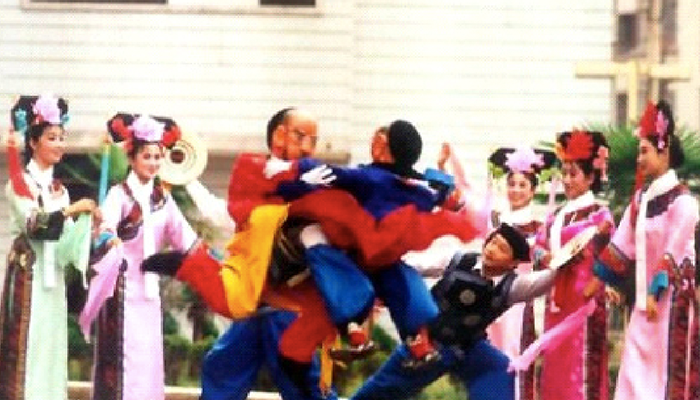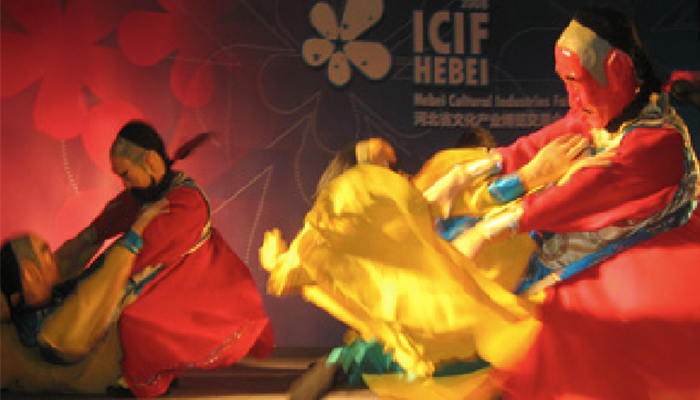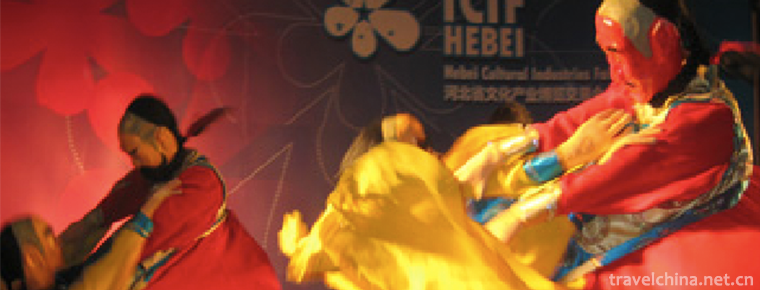Manchu Ergui wrestling
Manchu Ergui wrestling
Ergui wrestling is a traditional Manchu folk dance spread in the urban and rural areas of Longhua County, Hebei Province. It was formed in the late Qing Dynasty (around 1820 A.D.) and flourished between the late Qing Dynasty and the Republic of China. After the birth of New China, it was popularized and developed very quickly. During the Cultural Revolution, it was nearly extinct. Since 1984, after excavation, sorting and improvement of Longhua County's cultural department, it has gradually improved. It has become a cultural brand of Longhua and even Hebei Province. It has won many awards in various national competitions, which has aroused great repercussions throughout the country.
On June 7, 2008, Manchu Ergui wrestling was listed in the second batch of national intangible cultural heritage list with the approval of the State Council.
Skill
"Ergui wrestling" is a folk prop dance. The performers tie wooden wrestling props to their backs, squat their legs, wear a pair of thin-soled cloth boots with their hands upside down, and play each other's legs with their arms. With the accompaniment of the martial arts band, they perform the scene of two people's wrestling with both hands and feet. Its performance is powerful, humorous, collective performance momentum is magnificent, spectacular, highly ornamental and unique artistic charm. It combines unique props, sports and art, and has special historical, academic and research value. "Ergui wrestling" has won prizes in many national competitions, such as the national traditional minority sports games, the first international folk art festival, the first national single, double and triple dance competition, and the third national minority art festival. In June 2006, it was announced by the Hebei Provincial Government as the first batch of provincial intangible cultural heritage representatives. June 14, 2008 is a national intangible cultural heritage.
Historical evolution
"One man is worth two, hard to understand and hard to separate. If you throw yourself, you will decide the future. This is a poem about "Ergui wrestling" written by Chengde people. This legend began with the Manchu folk dance in the reign of Kangxi in the Qing Dynasty, and "fell" for more than 300 years along the way.
Ergui wrestling is not only the flower festival of Manchu people, but also a kind of sports activities. The performer is a person, but he can play two naughty children wrestling in braids by wearing cleverly made props. One person pretends to be two people wrestling, but imitates it vividly. It is difficult to distinguish the true from the false for a moment. It is funny and humorous.
The story of Kangxi's antagonism with Ao Bai is often regarded as a "selling point" in the movies and TV works, and "Ergui wrestling" is also closely related to them. At that time, Kangxi, a young man, held a wrestling competition in order to eliminate the obstacle on his way to power as soon as possible, and recruited warriors with high martial arts to help him. On May 16, 1669, the 16-year-old Kangxi finally got a chance. The warriors gathered to knock down the powerful assistant minister and the first-class official to the ground. Later, in order to celebrate Emperor Kangxi's saint-ming, the people specially transformed the scene of wrestling competition into a folk performance form of "two noble wrestling".
"Ergui wrestling" was not so called at first. Originally, it had a more externalized name, "Qiao Sumo", commonly known as "Ergui wrestling" by Chengde people. It was a performance sport with collective strength, intelligence and agility, and had been widely circulated. In the hundreds of years before the mid-1950s, this sport was quite popular in Chengde, and was often seen in Flower Fairs and festivals. Afterwards, influenced by various factors, "two ghosts wrestling" once disappeared. In the 1980s, "Ergui wrestling" was reorganized and processed by Chengde mass cultural workers and renamed "Ergui wrestling".



-
1.Chengde Summer Resort and its surrounding Temple scenic spot
Chengde Summer Resort and its surrounding Temple scenic spot, World Cultural Heritage, established in 1994. It is located in Chengde City, Hebei Province
Time 2018-11-24 -
2.Tiantangzhai Tourist Scenic Area
Tiantangzhai (National AAAAA Tourist Scenic Spot, National Nature Reserve, National Forest Park and National Geological Park) is the second peak of the Dabie Mountains
Time 2018-12-08 -
3.Tianshan Tianchi Scenic Area
Tianchi Mountain: World Natural Heritage, National AAAAA Class Tourist Scenic Spot, National Geopark, National Key Scenic Spot, National Civilized Scenic Spot, International and Natural Biosphere Rese
Time 2018-12-12 -
4.Yabuli Ski Resort
Yabuli Skiing Resort is a national AAAA-level scenic spot, located 20 kilometers southeast of Yabuli Town, Shangzhi City, Harbin City, Heilongjiang Province, 240 kilometers away from Harbin City
Time 2018-12-22 -
5.Taiping Ancient Town Scenic Area
Taiping Ancient Town is located at the junction of Gulin River and Chishui River, 35 kilometers away from Gulin County. Across the river from Xingmin Township in Xishui County, Guizhou Province
Time 2019-02-13 -
6.Wangcheng in heaven
Tianwangcheng Scenic Area is located 40 kilometers northwest of Yishui County, Linyi City, Shandong Province. The main part of the Scenic Area is located in Jiwanggu. It is the national AAAA scenic sp
Time 2019-02-21 -
7.Gu embroidery
Gu embroidery, a traditional folk art in Shanghai, is one of the national intangible cultural heritages.
Time 2019-05-01 -
8.Hui Costume
The main symbol of Hui costume is the head. Men like to wear white caps. Hui women often wear a hood. Older Hui women wear black or brown headscarves in winter
Time 2019-05-04 -
9.Mongolian Boke
Boke is one of Mongolian traditional sports and recreational activities. People on the grassland call Mongolian wrestling "Boke" (strong, united and lasting meaning of Mongolian). It is the
Time 2019-06-03 -
10.Chengdu University of TCM
Chengdu University of Traditional Chinese Medicine, formerly known as Chengdu College of Traditional Chinese Medicine, was founded in 1956. It was one of the earliest four Chinese medical colleges and
Time 2019-08-31 -
11.China Agricultural University
China Agricultural University (China Agricultural University), referred to as "China Agricultural University", is located in Beijing City By Ministry of Education of the People's Republic of
Time 2019-12-21 -
12.Education in Luzhou
In 2017, the construction area of the completed school buildings in Luzhou city was 842500 square meters; 670 million yuan of tuition free, financial aid, and nutrition lunch program was arranged to subsidize students with financial difficulties from families, and 79747 students with financial
Time 2020-12-14